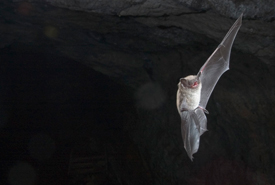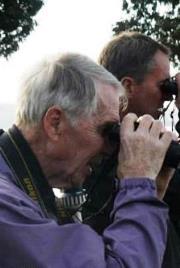Bats of the Happy Valley Forest region

Little brown myotis (Photo by Brock Fenton)
I’ve had many encounters with bats in the Happy Valley Forest over the years, but perhaps the most memorable was the one day in my practicing years when I was asked to visit on elderly lady at home. Consultants tend to eschew house-calls.
As I approached I could hear noises on the third floor of the big house but nobody was answering. In despair I entered and spoke to the elderly lady in her bed, then I opened the door to the other floors and demanded attention. Two young women dressed only in their underclothing appeared, one with a tennis racket and the other with a fish net. They had spent the night in their underclothing, undressed for bed, attempting to net one of two bats that had come down the chimney.
They had tried to catch a bat in flight and failed. I waited until one landed on the wall, put the net over it and then with a piece of cardboard gently pushed below the edge and had the first bat trapped, which I took to the window. The second bat was similarly disposed of. They burst into tears and kissed me in gratitude as the second bat flew off into the valley. I recommended that they call someone to cover the chimney pot on the roof to avoid this happening in the future. I think the bats were silver-haired bats, but in my excitement I did not pay attention.
Bats of the Happy Valley Forest
Of the eight species of bat on record in Ontario, all but one probably have been found in the Happy Valley Forest. Many of those recognized are found drowned in individual swimming pools.
A fungus is playing havoc with some bat species and there is considerable concern about declines in numbers. The fungus obstructs the bat’s nasal passages and will eventually kill it. It is called White-nose Syndrome. It is a serious disorder in the little brown bat which may even become extinct because of this infestation.
Bats either migrate north (one species) or hibernate when the insects disappear in the fall. They hibernate in abandoned factory chimneys, old barns, abandoned mine shafts and in cliffs. These flying mammals are important in summer insect control and will need every encouragement to maintain sustainable populations.
On occasions rabies will occur if the native bat is bitten by a southern, meat-eating variety susceptible to this disease. A bat bite demands anti-rabies therapy without waiting for a confirmed diagnosis.
This is the ninth in a series of blog posts Dr. Barnett will be contributing to Land Lines in the next few months.


